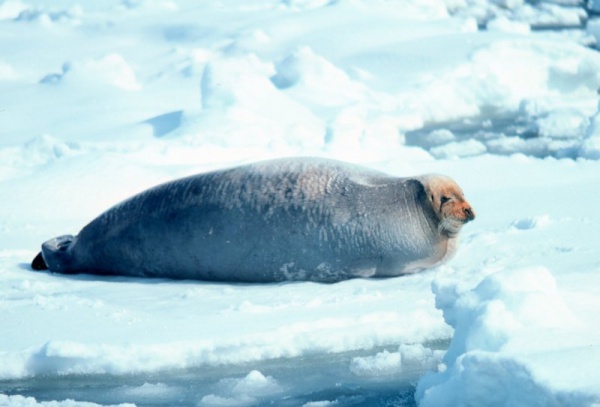Facts About Bearded seal
The bearded seal, also known as the square flipper seal, is a medium-sized marine mammal native to the Arctic Ocean. Identifiable by their robust jaws and distinctive whiskers, these seals are the largest of the northern phocids and belong to the family Phocidae. They exhibit characteristics from both subfamilies, Phocinae and Monachinae. Bearded seals have square-shaped fore flippers, dense bristles on their muzzles, and a greyish-brown coloration.
These seals primarily forage on the ocean floor, feeding on clams, squid, and fish. Their whiskers serve as sensitive detectors to help them locate prey. Bearded seals are a vital food source for polar bears and the Inuit people.
Bearded seals give birth in the spring, and their pups reach sexual maturity between five and six years of age. They utilize a reproductive strategy called delayed implantation, where the fertilized egg does not implant in the uterus until two months after fertilization, resulting in a nine-month active gestation period. These seals can live up to 31 years and face natural predators like polar bears, killer whales, and walruses.
One of the remarkable aspects of bearded seals is their vocalizations. They communicate through distinctive trills and moans, especially during the breeding season. While the IUCN currently classifies them as of "least concern" for extinction, bearded seals are threatened by climate change, loss of sea ice, bycatch, and hunting. Their conservation status is under close monitoring.
There are two recognized subspecies of bearded seals: Erignathus barbatus barbatus and Erignathus barbatus nautica. Fossil evidence suggests that bearded seals have been present since the early to mid-Pleistocene period. Evolutionary studies firmly place them within the Phocidae family, with some theories suggesting close relations to other seal species. Research on their vocalizations has shown differences between populations, supporting the existence of these subspecies.
